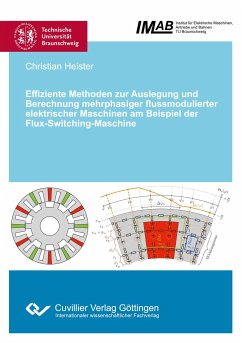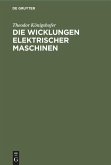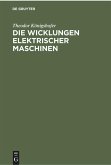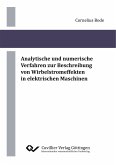This thesis deals with the efficient design and calculation of multiphase flux-modulated machines. Even though the methods and models developed in this thesis are applied to the example of flux-switching machine, they can also be used to model other machines which are based on the flux-modulation principle, such as Vernier and flux-reversal machine, without loss of generality. This thesis provides four major contributions, which are briefly summarized below: The description of the functional behavior of a flux-modulated machine by means of the rotating field theory, solely based on the fundamental wave, is insufficient. Therefore, the rotating field theory is extended to include slotting effects. In order to be more general, the theory is extended for multiphase windings, and the operating principle of the flux-switching machine is analyzed. The harmonic spectrum resulting from the flux-modulation-effect requires a different approach for the winding design compared to that used for conventional machines. For this purpose, an automated and deterministic algorithm based on flux quantities is developed. It considers the entire harmonic spectrum of field waves and allows to design windings of arbitrary phase numbers. For the calculation of magnetic flux, a generic modeling approach based on magnetic equivalent circuit theory is developed and implemented in software, which considers slotting and saturation effects. From the geometrical data, the formulation as well as the solution of the field equations are automatically done by the developed software. The development of the machine model takes the numerical efficiency aspects in solving the system of equations into consideration. A hybrid formulation, which is based on a formal solution of Maxwell¿s equations in the air gap, is also investigated. Despite a reduction in the number of unknowns to be determined, it proves to be numerically more complex and thus inefficient than an implementation based on magnetic equivalent network elements developed in this work. The high accuracy of the field solution is demonstrated by comparing with results from finite element method. The developed methods and models are integrated into a toolchain, which is used for a topology study of flux switching machines with three to twelve phases. It consists of 218 different globally optimized topologies. Many topologies with more than three phases are described for the first time in this thesis. A comparison with results from other research work proves that either better winding designs are found in this thesis or already known designs can be reproduced and verified as optimal.








